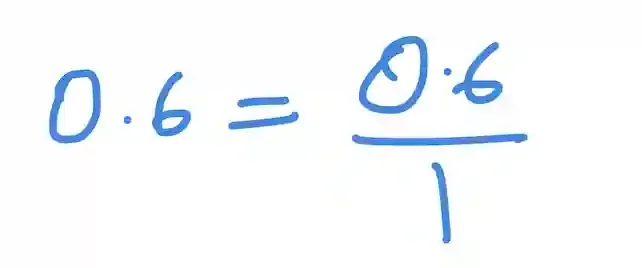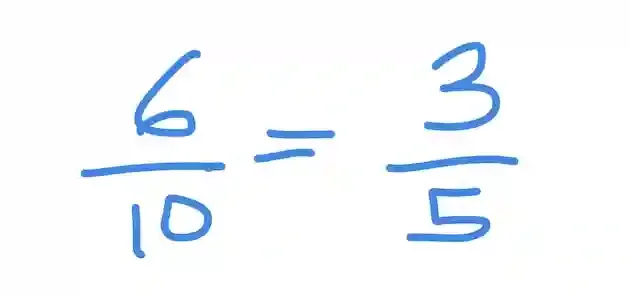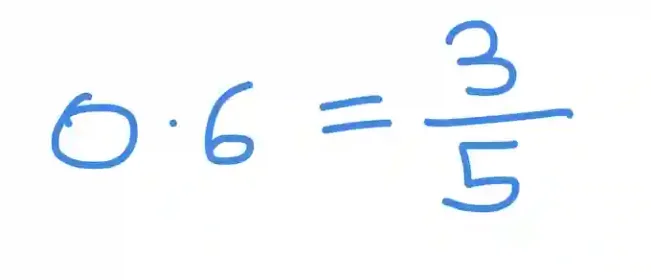Kodeclik Blog
How to turn decimals into fractions
You know of decimals, like 1.2, 3.14, or 12.5. A fraction has a numerator and denominator such as 5/9 (pronounce it as “5 over 9”), ¾ (three-fourths to be short), or ½ (half). How do we convert a decimal into a fraction? There is a methodical, fool-proof, way to do so! Lets learn it!
Step 1: Write Down the Decimal Over 1
Begin by expressing your decimal number as a fraction with 1 as the denominator. This simply means putting the decimal number “over” 1, treating it as a fraction even though it still has a decimal point. This step sets up the number so you can easily manipulate it in the next steps.
Example: If your decimal is 0.6, you write it as 0.6/1. This doesn’t change the value, but it helps you start thinking of the decimal as a fraction.

Step 2: Multiply to Remove the Decimal

Now, look at how many digits are to the right of the decimal point. This tells you how many times you need to multiply both the numerator and the denominator by 10 to get rid of the decimal point. For every digit after the decimal, multiply by 10.
Example: For 0.6, there is 1 digit after the decimal point. Multiply both the top (numerator) and bottom (denominator) by 10: (0.6 × 10) / (1 × 10) = 6/10. If you had 0.75, with two digits after the decimal, you would multiply by 100 instead.
Step 3: Simplify the Fraction

At this point, you have a fraction, but it might not be in its simplest form. To simplify, find the greatest common divisor (GCD) of the numerator and denominator, and divide both by that number. This reduces the fraction to its lowest terms, making it easier to read and work with.
Example: With 6/10, both numbers can be divided by 2 (their GCD). So, 6 ÷ 2 = 3 and 10 ÷ 2 = 5, giving you 3/5 as the simplified fraction.
Step 4: Verify your Solution

As a final step, you can check your answer by converting the fraction back into a decimal. Simply divide the numerator by the denominator using a calculator or long division. If you get your original decimal, you know your conversion is correct!
Example: For 3/5, divide 3 by 5 and you get 0.6, which matches the original decimal. This gives you confidence that your answer is accurate.
Example 1: 0.75

- Write as 0.75/1.
- Two digits after the decimal: multiply by 100 → 75/100.
- Simplify: divide by 25 → 3/4.
Example 2: 1.2

- Write as 1.2/1.
- One digit after the decimal: multiply by 10 → 12/10.
- Simplify: divide by 2 → 6/5.
Example 3: 0.05

- Write as 0.05/1.
- Two digits after the decimal: multiply by 100 → 5/100.
- Simplify: divide by 5 → 1/20.
Example 4: 2.5

- Write as 2.5/1.
- One digit after the decimal: multiply by 10 → 25/10.
- Simplify: divide by 5 → 5/2.
Example 5: 3.125

- Write as 3.125/1.
- Three digits after the decimal: multiply by 1000 → 3125/1000.
- Simplify: divide by 125 → 25/8.
When do you need to convert decimals to fractions?
- Cooking and Baking: Recipes often use fractions (like ¾ cup of sugar) or decimals (like 0.5 liters of milk). Being able to convert between the two helps in accurate measurement and scaling recipes.
- Science and Engineering: Measurements in science experiments and engineering calculations are often in decimal form. Fractions can make calculations easier or more precise, especially when working with ratios and proportions.
- Finance and Money: Interest rates, discounts, and taxes are often given in decimals, but sometimes need to be expressed as fractions for calculations, contracts, or understanding proportions.
- Everyday Life: Whether you’re dividing a pizza, measuring materials for a DIY project, or splitting a bill, knowing how to switch between decimals and fractions is a handy life skill.
Summary
Turning decimals into fractions is a straightforward process that can make math easier and more intuitive. With a little practice, you’ll be switching between decimals and fractions like a pro!